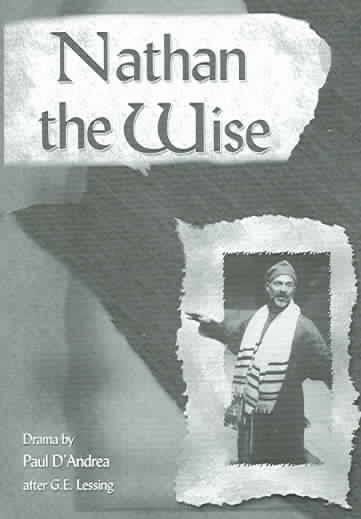Date premiered 14 April 1783 | Original language German First performance 14 April 1783 Adaptations Nathan the Wise (1922) | |
 | ||
Place premiered Döbbelinsches Theater (de), Berlin Similar Gotthold Ephraim Lessing plays, Other plays | ||
Nathan the wise by gotthold ephraim lessing this week in jewish history
Nathan the Wise (original German title: Nathan der Weise) is a play published by Gotthold Ephraim Lessing in 1779. It is a fervent plea for religious tolerance. Its performance was forbidden by the church during Lessing's lifetime; it was first performed in 1783 at the Döbbelinsches Theater in Berlin.
Contents
- Nathan the wise by gotthold ephraim lessing this week in jewish history
- Nathan the wise to go lessing in 12 minutes english version
- Ring Parable
- Background
- English language translations and stage adaptations
- Revivals
- References
Set in Jerusalem during the Third Crusade, it describes how the wise Jewish merchant Nathan, the enlightened sultan Saladin, and the (initially anonymous) Templar bridge their gaps between Judaism, Islam and Christianity. Its major themes are friendship, tolerance, relativism of God, a rejection of miracles and a need for communication.
Nathan the wise to go lessing in 12 minutes english version
Ring Parable
The centerpiece of the work is the "Ring Parable", narrated by Nathan when asked by Saladin which religion is true: an heirloom ring with the magical ability to render its owner pleasing in the eyes of God and mankind had been passed from father to the son he loved most. When it came to a father of three sons whom he loved equally, he promised it (in "pious weakness") to each of them. Looking for a way to keep his promise, he had two replicas made, which were indistinguishable from the original, and gave on his deathbed a ring to each of them.
The brothers quarreled over who owned the real ring. A wise judge admonished them that it was impossible to tell at that time – that it even could not be discounted that all three rings were replicas, the original one having been lost at some point in the past; that to find out whether one of them had the real ring it was up to them to live in such a way that their ring's powers could prove true, to live a life that is pleasant in the eyes of God and mankind rather than expecting the ring's miraculous powers to do so. Nathan compares this to religion, saying that each of us lives by the religion we have learned from those we respect.
Background
The character of Nathan is to a large part modeled after Lessing's lifelong friend, the eminent philosopher Moses Mendelssohn. Similarly to Nathan the Wise and Saladin, whom Lessing makes meet over the chess-board, they both shared a love for the game.
The motif of the Ring Parable is derived from a complex of medieval tales which first appeared in the German language in the story of Saladin's table in the Weltchronik of Jans der Enikel. Lessing probably had the story in the first instance from Boccaccio's Decameron.
English language translations and stage adaptations
Revivals
In 1922 it was adapted into a silent film of the same title.
In 1933, the Kulturbund Deutscher Juden (Culture Association of German Jews) was created in Germany, enabling Jewish artists who had recently lost their jobs to perform to exclusively Jewish audiences. On October 1, Nathan the Wise became the first performance of this new federation. It was the only time the play was performed in Nazi Germany.
This was the first play to be performed in Germany after the end of World War II.
In the early 21st century, the Ring Parable of Nathan the Wise was taken up again in Peter Sloterdijk's Gottes Eifer: Vom Kampf der drei Monotheismen.
Edward Kemp's 2003 version of the play, first produced by the Minerva Theatre, Chichester, was used in 2016 in New York by the Classic Stage Company with F. Murray Abraham in the lead.
